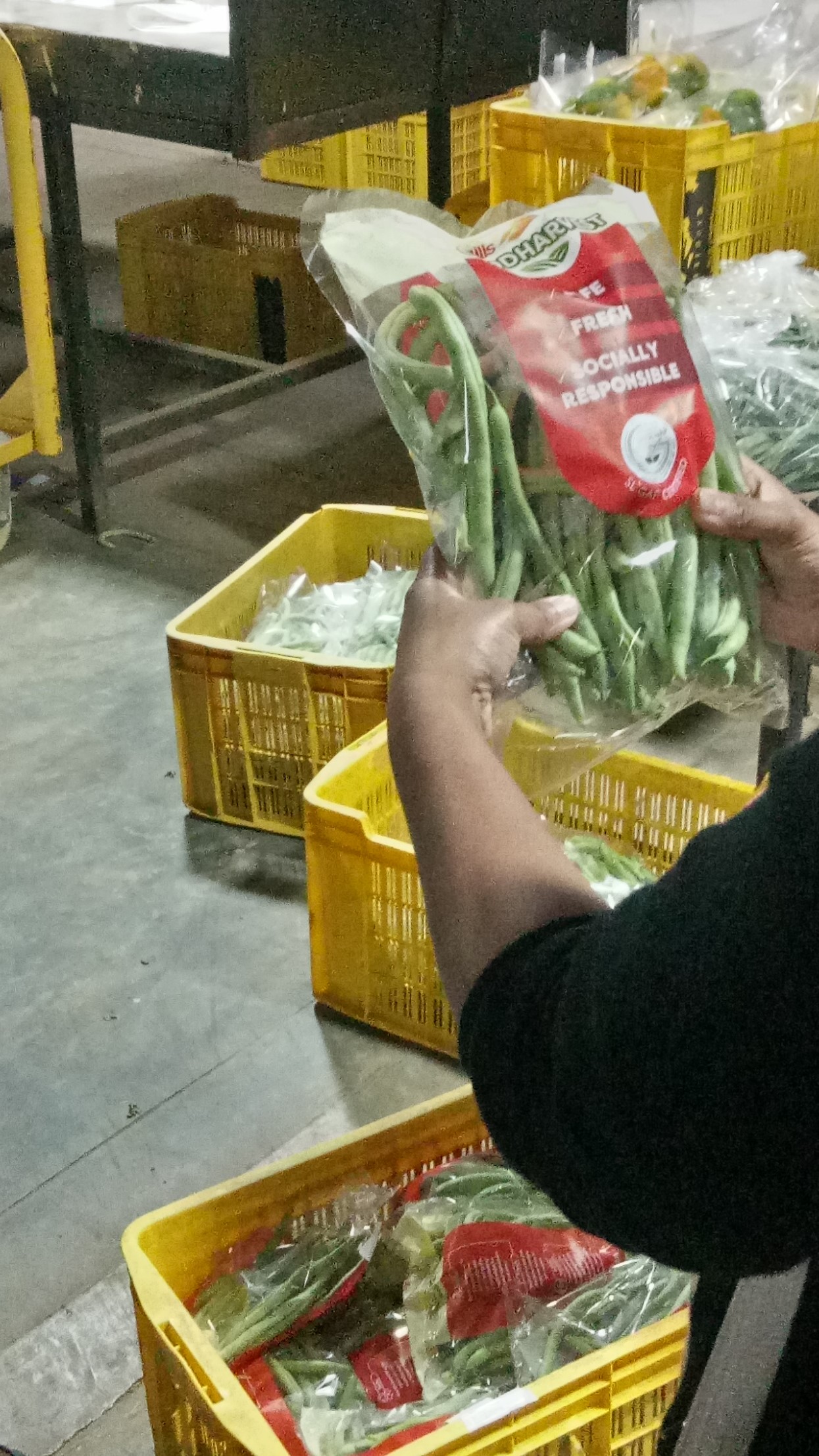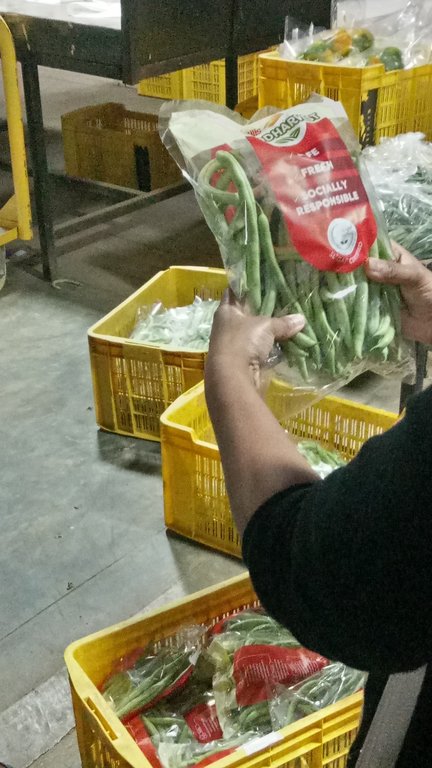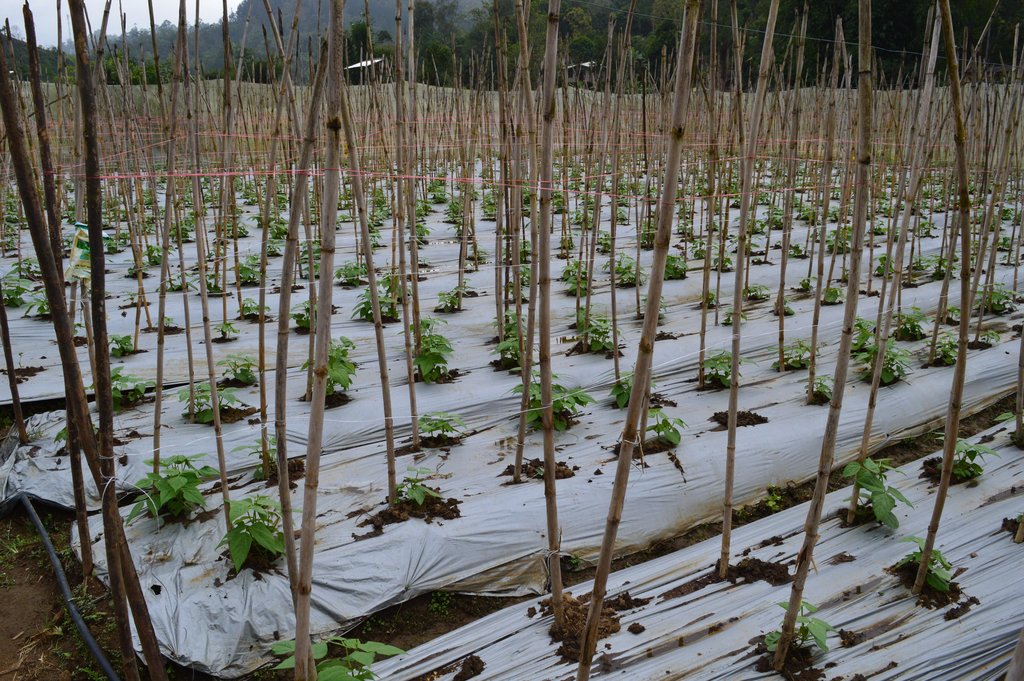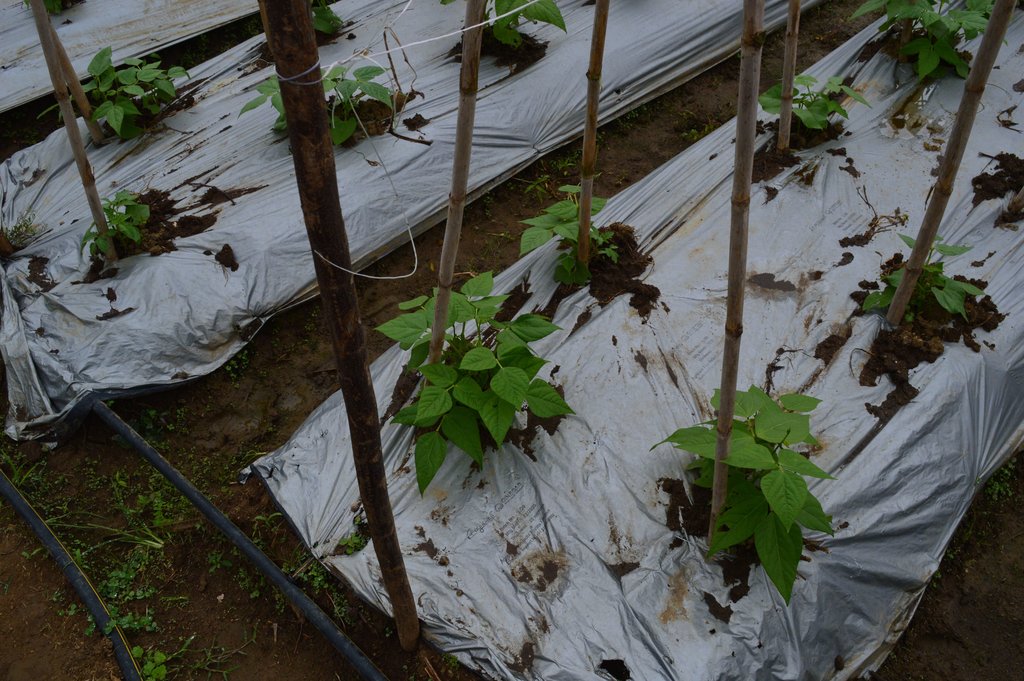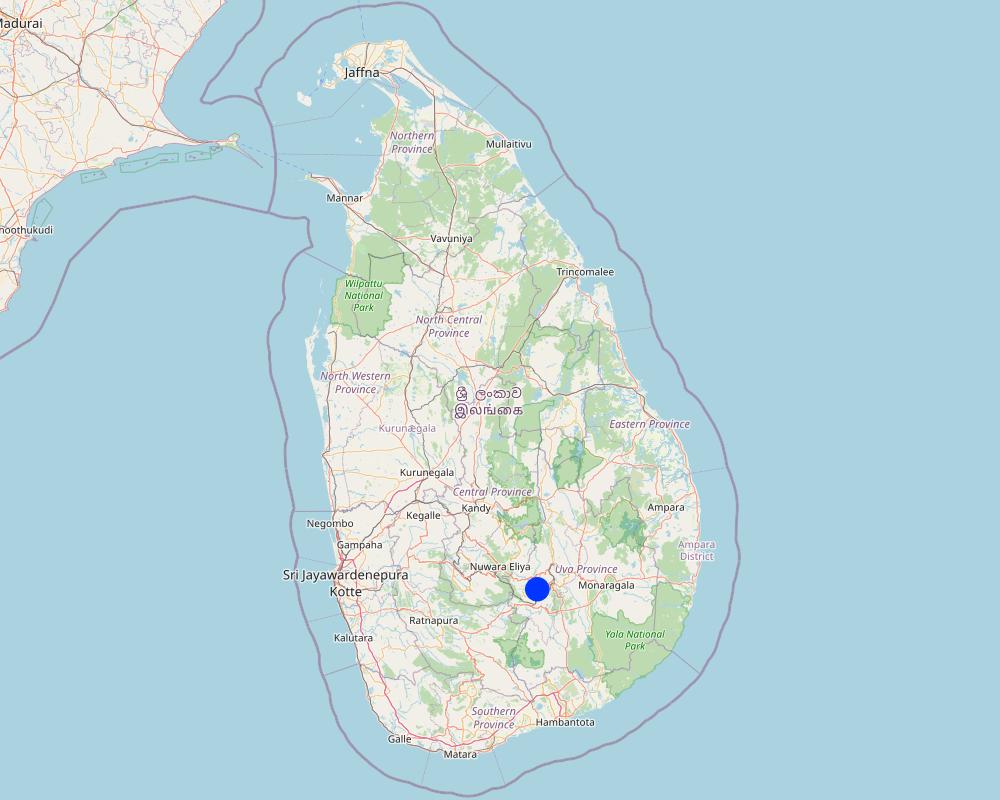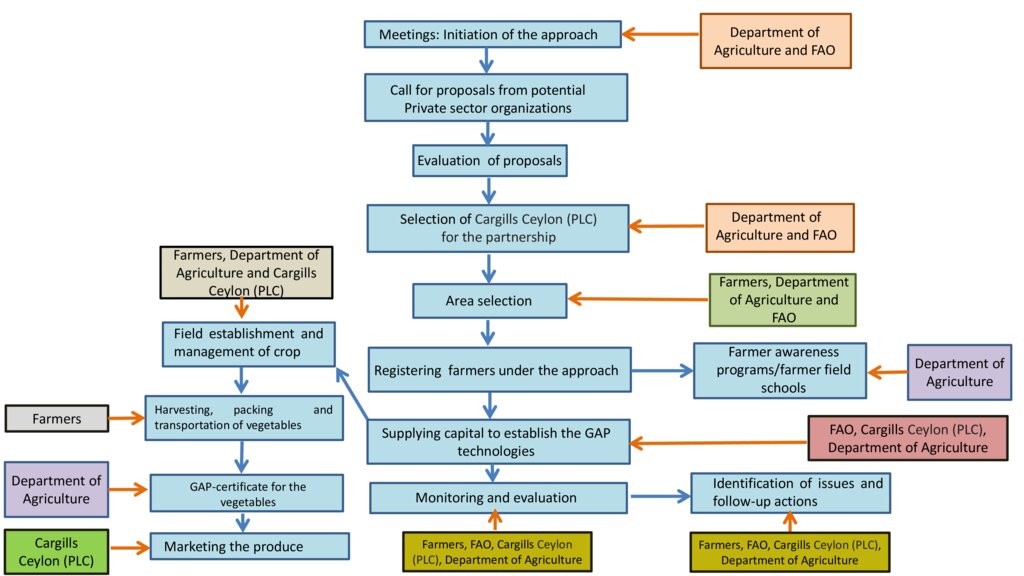Private-public partnership to promote Sustainable Land Management and Good Agricultural Practices among vegetable growers [Sri Lanka]
- Creation:
- Update:
- Compiler: Head Soil Science
- Editor: –
- Reviewers: William Critchley, Joana Eichenberger
GAP Program
approaches_6229 - Sri Lanka
View sections
Expand all Collapse all1. General information
1.2 Contact details of resource persons and institutions involved in the assessment and documentation of the Approach
Key resource person(s)
land user:
Leelarathna Herath Mudiyanselage
+94 713586312
Ketakela, Ambegoda, Bandarawela
Sri Lanka
SLM specialist:
Karunathilaka D.L. Manoj
+9477 3992261
manoj.ka@cargillsceylon.com
Cargills (Ceylon) PLC
40, York Street, Colombo
Sri Lanka
SLM specialist:
Jayaweera Tharindu
+94713586312
tmjanusha@gmail.com
Department of Agriculture, Sri Lanka
Agrarian Service Centre, Bandarawela
Sri Lanka
SLM specialist:
Gunasena Nimal
+94714490338
Nimal.Gunasena@fao.org
Food and Agriculture Organization of United Nations
202, Bauddhaloka Mawatha, Colombo 00700
Sri Lanka
land user:
Bandara K.M.S.J Jayasiri
+94741066961
No. 178, Ketakela, Ambegoda, Bandarawela
Sri Lanka
co-compiler:
Attanayake Chammi
(+)94 71 147 2288
chammiatt@agri.pdn.ac.lk / chammiattanayake@gmail.com
Department of Soil Science, Faculty of Agriculture, University of Peradeniya
Peradeniya, Sri Lanka
Sri Lanka
co-compiler:
Name of project which facilitated the documentation/ evaluation of the Approach (if relevant)
Rehabilitation of Degraded Agricultural Lands in Kandy, Badulla and Nuwara Eliya Districts in the Central Highlands of Sri LankaName of the institution(s) which facilitated the documentation/ evaluation of the Approach (if relevant)
Food and Agriculture Organization of the United Nations (FAO) - ItalyName of the institution(s) which facilitated the documentation/ evaluation of the Approach (if relevant)
Faculty of Agriculture, University of Peradeniya, Sri Lanka (AGRI.PDN) - Sri LankaName of the institution(s) which facilitated the documentation/ evaluation of the Approach (if relevant)
Department of Agriculture, Sri Lanka (DOA) - Sri LankaName of the institution(s) which facilitated the documentation/ evaluation of the Approach (if relevant)
Cargills (Ceylon) PLC (Cargills) - Sri Lanka1.3 Conditions regarding the use of data documented through WOCAT
When were the data compiled (in the field)?
24/02/2022
The compiler and key resource person(s) accept the conditions regarding the use of data documented through WOCAT:
Yes
1.4 Reference(s) to Questionnaire(s) on SLM Technologies
2. Description of the SLM Approach
2.1 Short description of the Approach
A private-public partnership overcomes constraints that vegetable farmers encounter when adopting novel SLM technologies and Good Agricultural Practices. The private sector helps with marketing, value addition, certification, and financial support. The public sector fulfils farmer training needs through (for example) Farmer Field Schools using digital platforms.
2.2 Detailed description of the Approach
Detailed description of the Approach:
This approach was implemented in vegetable growing lands in hilly and rolling terrain, where the average annual rainfall is relatively high: Wet zone (>2500 mm) Intermediate zone (1750-2500 mm-short dry periods). Controlling soil erosion is crucial in these regions. Further, overuse and misuse of agrochemicals are common among the farmers. On the other hand, farmers experience lack of market opportunities, lack of technical and financial support and water scarcity in the intermediate zone which restricts farming to 1 or 2 cropping cycles. This approach aims to support vegetable growers by providing financial and technical support to implement technologies to minimize soil erosion and increase fertilizer and water use efficiencies, while providing adequate market opportunities and product value addition.
In the field, the following technologies were implemented as a package: plastic mulch, terracing, drip irrigation systems, fertigation units and insect proof nets. Furthermore, capacity development programs were implemented along with continuous monitoring, financial support was provided to adopt the technologies. The market opportunity was expanded via value addition through “GAP-certification" (GAP = Good Agricultural Practices) and facilitating easy and secured access to market via private sector involvement.
By adopting this technological package farmers were able to reduce the fertilizer use by about 70-80 % via "fertigation" - that is fertilizer mixed in irrigation water. Further, the pest attacks and need of insecticides were significantly reduced due to insect proof nets. The weed growth was negligible due to the plastic mulch which reduced the labour cost significantly as previously, farmers used to control weeds manually. Soil erosion was minimal due to plastic mulch used over the contour terraces. The water use efficiency was improved via drip irrigation and the farming was not affected by the short drought periods. The overall cost reduction that the farmers experience by adopting this technological package was about 20%. Further, the yield increase was about 20%, which raised the profit by 30%. Proper use of pesticides with adequate safety measures and safe disposal of the pesticide containers are mandatory to be qualified for GAP-certification. Farmers that adopt this approach collect pesticide containers in a designated place in the farm.
The implementation of the approach was as follows:
1.Discussions between Food and Agriculture Organization of United Nations (FAO) and Department of Agriculture, Sri Lanka (DOA) to develop a private-public partnership (PPP).
2.Call for proposals from private sector supermarket owners and exporters.
3.The proposal of Cargills (Ceylon) PLC was accepted.
4.Areas with easy access to Cargill’s vegetable collection centers were selected for the pilot programme, namely Haguranketha and Nuwarleiya, Boralanda and Bandarawela.
5.Eighty progressive farmers who had been providing vegetables for the already established vegetable collection centers were selected for the initial program.
6.Farmer awareness programs and Farmer Field Schools were conducted on the technological package, the GAP certification process and market arrangements.
7.The technical package was installed in farmers’ fields. Farmers were supported financially to obtain raw materials and cover the capital cost (for polythene, drip irrigation systems, insect-proof nets and accessories, fertilizers and pesticides). The cost estimated to implement the package was Rs. 300,000 for quarter of an acre (Rs. 2.96 million/ha = approx. UD$ 8950/ha). Cargills and the FAO funded RDAL (Rehabilitation of degraded agricultural lands in the central highlands of Sri Lanka) shared 2/3 of the material cost. The rest of the cost was borne by the farmer. Cargills Bank provided low interest loans to farmers to cover their share of the capital cost.
8.Continuous monitoring and capacity development and motivational programs were implemented via field visits and WhatsApp groups.
9.GAP-certification was provided for the vegetables.
10.A market was provided by Cargills with a guaranteed 10% premium above the standard rate.
11.Alongside the implementation processes, other developments took place. These included: supply of fertilizers and pesticides to farmers and provision of study scholarships for children of the farmers by Cargills.
The limitations of the approach are as follows: first, reluctance of the farmers to follow the rigorous record-keeping process necessary to obtain the GAP-certification; second, the absence of a proper methodology to recycle or upcycle the pesticide containers; third, the on-going lack of consumer awareness about the GAP-certified products.
2.3 Photos of the Approach
2.5 Country/ region/ locations where the Approach has been applied
Country:
Sri Lanka
Region/ State/ Province:
Bandarawela/Badulla District/Uva Province
Further specification of location:
Ambegoda Village
Comments:
Ambegoda village is located about 8 km away from Bandarawela town. Other than the studied site, this approach was implemented in Jaffna, Kilinochchi, Monaragala, Thabuttegama, Galenbindunuwewa, Boralanda, Adhikaarigama and Thanamalwila areas
Map
×2.6 Dates of initiation and termination of the Approach
Indicate year of initiation:
2019
2.7 Type of Approach
- project/ programme based
2.8 Main aims/ objectives of the Approach
This approach aims to support vegetable growers by providing financial and technical support to implement technologies to minimize soil erosion and increase fertilizer and water use efficiencies, while providing adequate market opportunities and product value addition via GAP-certification.
2.9 Conditions enabling or hindering implementation of the Technology/ Technologies applied under the Approach
availability/ access to financial resources and services
- enabling
Farmers are encouraged to get financial support from the Cargills (Ceylon) PLC to implement their technological package
legal framework (land tenure, land and water use rights)
- enabling
The collaboration between government and private sector helped to build the trust among farmers about the approach
knowledge about SLM, access to technical support
- enabling
The knowledge gained on SLM practices obtained through farmer field schools was important for the success of the approach
markets (to purchase inputs, sell products) and prices
- enabling
The GAP certified agricultural produce was purchased by Cargills (Ceylon) PLC for a higher price; hence many farmers were motivated to implement the technology in their fields
3. Participation and roles of stakeholders involved
3.1 Stakeholders involved in the Approach and their roles
- local land users/ local communities
Farmers
Farmers implement the technology in their fields
- SLM specialists/ agricultural advisers
Agricultural Instructors (AI) of DOA
AIs organize farmer field schools and training programmes for farmers. They also visit the fields to guide, monitor and provide recommendations for the farmers for successful implementation of the approach. The experts connect with the farmers through WhatsApp groups, where the farmers can quickly find solutions for the issues. Also, it facilitated the peer learning among the farmers.
- private sector
Cargills (Ceylon) PLC
Cargills (Ceylon) PLC is the buyer of the fresh produce from farmers who practice this approach. The collection centre manager of the Cargills (Ceylon) PLC plays a critical role. He connects with the farmers from the field establishment of the technology package to packing and transporting the final produce to the collection centers.
- international organization
FAO
FAO initiated the program and is one of the main coordinating bodies of the project of Rehabilitation of degraded agricultural lands in the central highlands of Sri Lanka (RDAL).
3.2 Involvement of local land users/ local communities in the different phases of the Approach
| Involvement of local land users/ local communities | Specify who was involved and describe activities | |
|---|---|---|
| initiation/ motivation | passive | Though the progressive farmers were selected from the farmers who sell their produce to the Cargills (Ceylon) PLC collection centres at the initial phase of the project, new farmers were motivated to implement the approach when they observed the success of the neighbouring farmers. |
| planning | none | The planning phase of the approach totally governed by the RDAL project team with the assistance of the private and government sector stakeholders. |
| implementation | external support | Farmers directly involved with the implementation phase of the approach. |
| monitoring/ evaluation | interactive | Farmers were actively involved with the monitoring and evaluation process of the approach by discussing the problem faced by them and finding solutions with the help of AIs. Farmers collectively shared their experience and those feedback helped for the evaluation process of the approach. |
| Expansion | external support | The children of the farmers are given study scholarships by the private sector partner. |
3.3 Flow chart (if available)
Description:
The flow chart demonstrates the approach with the intervening steps of the Public and private sectors
Author:
Dr. Chammi Attanayake and Mr. Tharindu Kulasinghe
3.4 Decision-making on the selection of SLM Technology/ Technologies
Specify who decided on the selection of the Technology/ Technologies to be implemented:
- mainly SLM specialists, following consultation with land users
Explain:
Selection of technologies to be implemented in the approach was done based on the discussions between the FAO representatives, DOA officials and Cargills (Ceylon) PLC. AIs of DOA have been closely working with the farmers; hence, their experience was very helpful to select the best technologies to be implemented in farmer fields.
Specify on what basis decisions were made:
- evaluation of well-documented SLM knowledge (evidence-based decision-making)
- personal experience and opinions (undocumented)
4. Technical support, capacity building, and knowledge management
4.1 Capacity building/ training
Was training provided to land users/ other stakeholders?
Yes
Specify who was trained:
- land users
Form of training:
- on-the-job
- farmer-to-farmer
- demonstration areas
Subjects covered:
Establishment and maintenance of GAP technology in farmer fields, irrigation management (drip irrigation), pests and disease management, fertilizer application through drip irrigation (fertigation), post-harvest technology, nursery management
Comments:
Training programs mainly focused on establishment and maintenance of technology package according to standards and identification of pest and disease problems. Training programs are held in fields as farmer field schools. Those training programs are organized and conducted by AIs of the DOA and Agricultural Officers of Cargills (Ceylon) PLC. A training program provides information from the establishment of the technological package to harvesting of the fresh produce
4.2 Advisory service
Do land users have access to an advisory service?
Yes
Specify whether advisory service is provided:
- on land users' fields
Describe/ comments:
AIs of DOA and agricultural officers of Cargills (Ceylon) PLC visit farmers frequently to guide farmers and train them for better management of the technologies in the field
4.3 Institution strengthening (organizational development)
Have institutions been established or strengthened through the Approach?
- no
4.4 Monitoring and evaluation
Is monitoring and evaluation part of the Approach?
Yes
If yes, is this documentation intended to be used for monitoring and evaluation?
Yes
4.5 Research
Was research part of the Approach?
No
5. Financing and external material support
5.1 Annual budget for the SLM component of the Approach
Indicate the annual budget for the SLM component of the Approach in US$:
165000.00
Comments (e.g. main sources of funding/ major donors):
FAO and Cargills (Ceylon) PLC are main sources of funding to implement the approach
5.2 Financial/ material support provided to land users
Did land users receive financial/ material support for implementing the Technology/ Technologies?
Yes
If yes, specify type(s) of support, conditions, and provider(s):
At the implementation, the farmers receive materials worth of 260,000 LKR, which consists of drip irrigation system, plastic mulch and insect proof net. This covers 2/3 of the cost of implementation. The rest of the cost, mostly the labor cost, is borne by the farmer. The farmer was given the choice of receiving a low interest loan through Cargills Agro-development Company and Cargills Bank, the subsidiaries of Cargillls (Ceylon) PLC to cover their share of the capital cost.
5.3 Subsidies for specific inputs (including labour)
- equipment
| Specify which inputs were subsidised | To which extent | Specify subsidies |
|---|---|---|
| tools | fully financed | Drip irrigation system (pipes, nozzles, pumps, filters, water tank) Insect proof net Plastic materials for the mulch |
If labour by land users was a substantial input, was it:
- paid in cash
5.4 Credit
Was credit provided under the Approach for SLM activities?
Yes
Specify conditions (interest rate, payback, etc.):
The interest rate of the loan is 8%, repayable in 2 years with a grace period of 6 months
Specify credit providers:
The loan is provided through Cargills Agro-development Company and Cargills Bank, subsidiaries of Cargillls (Ceylon) PLC
Specify credit receivers:
Farmers
5.5 Other incentives or instruments
Were other incentives or instruments used to promote implementation of SLM Technologies?
Yes
If yes, specify:
If yes, specify: Cargills (Ceylon) PLC prioritize the project farmers when purchasing the produce at collection centres and also they provide packing and branding materials under Cargill’s Good Harvest Brand. A 20% extra payment, above the normal purchasing price, is made for GAP-Certified, ‘Good Harvest’ branded products, subject to a minimum and maximum amounts of Rs. 10.00 and Rs. 30.00 per kg respectively.
6. Impact analysis and concluding statements
6.1 Impacts of the Approach
Did the Approach empower local land users, improve stakeholder participation?
- No
- Yes, little
- Yes, moderately
- Yes, greatly
The stakeholder’s participation is encouraged through farmer field schools and advisory services. The collective action of farmers to solve field problems themselves is observed through such programs.
Did the Approach help land users to implement and maintain SLM Technologies?
- No
- Yes, little
- Yes, moderately
- Yes, greatly
The technology package introduced for farmers, insect proof net, drip irrigation system and plastic mulch, through the approach aims for irrigation water conservation; mitigate soil erosion and pest and disease attacks.
Did the Approach improve coordination and cost-effective implementation of SLM?
- No
- Yes, little
- Yes, moderately
- Yes, greatly
The technology package of the approach is ultimately reducing the cost for labour, irrigation, pesticides and other agrochemicals.
Did the Approach mobilize/ improve access to financial resources for SLM implementation?
- No
- Yes, little
- Yes, moderately
- Yes, greatly
Farmers receiving a loan to implement the approach in their fields.
Did the Approach improve knowledge and capacities of land users to implement SLM?
- No
- Yes, little
- Yes, moderately
- Yes, greatly
The farmers were trained on SLM practices through extension programs (farmer field schools and advisory services).
Did the Approach build/ strengthen institutions, collaboration between stakeholders?
- No
- Yes, little
- Yes, moderately
- Yes, greatly
Active involvement of public and private sector participation is a distinct feature of the approach
Did the Approach encourage young people/ the next generation of land users to engage in SLM?
- No
- Yes, little
- Yes, moderately
- Yes, greatly
The interest on participation of young generation in the approach is significant due to implementation of novel technologies. And also because of the deviation of the traditional vegetable cultivation practices.
Did the Approach lead to improved food security/ improved nutrition?
- No
- Yes, little
- Yes, moderately
- Yes, greatly
The approach helps to improve the yield and the quality of the produce
Did the Approach improve access to markets?
- No
- Yes, little
- Yes, moderately
- Yes, greatly
The harvest of the farmers who implement the technologies, is purchased by the Cargills (Ceylon) PLC for a reasonably higher price.
Did the Approach improve the capacity of the land users to adapt to climate changes/ extremes and mitigate climate related disasters?
- No
- Yes, little
- Yes, moderately
- Yes, greatly
Farmers require less irrigation water when cultivating under drip irrigation and plastic mulch technologies. Hence the cultivation can proceed even under a drought or water scarce conditions.
6.2 Main motivation of land users to implement SLM
- increased production
Vegetable production increases due to better crop management practices, improved irrigation efficiency and reduced pests and disease damages
- increased profit(ability), improved cost-benefit-ratio
Cargills (Ceylon) PLC prioritizes the GAP certified farmers and buy vegetables for higher prices with contrast to other farmers. Hence, vegetable cultivation under the approach is a sort of value addition for the fresh produce. Moreover, the labour cost for field establishment of crop, irrigation, weeding and pesticide application is less and increase the profitability of cultivation
- reduced land degradation
The drip irrigation system and the plastic mulch help to increase the irrigation water use efficiency. Plastic mulch also can be considered as a soil conservation measure and it reduces weed growth.
- reduced risk of disasters
Farmers can cultivate even under water scarce or drought conditions and reduces the risk of crop failure due to water scarcity
- reduced workload
The labour requirement for irrigation, planting, weeding, pesticide application is less under the GAP approach
- payments/ subsidies
The farmers who follow GAP are getting higher price for vegetables compared to other farmers (10% higher payment, than the normal purchasing price)
- environmental consciousness
The approach reduces the use of pesticides and irrigation water and reduce soil erosion.
- enhanced SLM knowledge and skills
Farmers are getting new knowledge on technologies that utilize resources more efficiently and they are getting skills on an establishment and managing modern technology package.
6.3 Sustainability of Approach activities
Can the land users sustain what has been implemented through the Approach (without external support)?
- yes
If yes, describe how:
The assurance of the market for value added products via well-established market chain of the Cargills (Ceylon) PLC is a major reason behind the sustainability of the approach.
6.4 Strengths/ advantages of the Approach
| Strengths/ advantages/ opportunities in the land user’s view |
|---|
| Increased vegetable production compared to the conventional and traditional agricultural management practices. |
| Reduced cost for labour for establishment of the crop, irrigation, pesticide application, weeding and for other maintenance activities. |
| Financial benefit obtained by the lower requirement of fertilizers and agrochemicals |
| The number of cropping cycles was increased in regions where short drought periods exist. |
| Selling the produce for a higher price due to value addition via certification. |
| Minimizes the involvement of middlemen in selling farmer’s produce for market helps to increase the farmer’s profit and also benefits the seller, Cargills (Ceylon) PLC, ultimately the consumer. |
| Strengths/ advantages/ opportunities in the compiler’s or other key resource person’s view |
|---|
| Minimum soil erosion due to use of plastic mulch and terraces. The lands are susceptible for erosion by water due to relatively high rainfall intensity and the hilly-rolling terrain. The control of soil erosion is curial to maintain sustainable land use in the region. |
| The inorganic fertilizer use was reduced by 70-80%. Use of pesticides was significantly reduced. Soil nutrient enrichment and pollution of soil and water sources were minimal. |
| Increased vegetable production helps for the food security of the country. |
| Improves the quality of the fresh produce. |
| Increased water use efficiency. |
| Uplifting the quality of life among the rural farming community. |
| Attraction of young community for farming. |
6.5 Weaknesses/ disadvantages of the Approach and ways of overcoming them
| Weaknesses/ disadvantages/ risks in the land user’s view | How can they be overcome? |
|---|---|
| Maintaining the technology under field conditions is difficult due to the cause of natural factors (eg: High winds break the insect proof net). | The effect of natural factors on structures of the technology can be minimized by establishing those structures suitable for specific natural conditions. Live wind breakers (Rows of trees) can be established. |
| Discard of plastic materials (insect proof net and plastic mulch) when their lifespan is over. | Implementation of waste disposal method is required and need to look for possible recycling options. |
| Weaknesses/ disadvantages/ risks in the compiler’s or other key resource person’s view | How can they be overcome? |
|---|---|
|
The farmers of older generation are somewhat reluctant to adopt the approach, mainly because of rigorous record keeping process |
This can be overcome by conducting advisory programs and extension services targeting specific groups of farming communities |
| Requirement of more financial support to cover the capital | Provide more subsidies and loans |
| Lack of consumer awareness about "Gap-certified products" | Advertising |
7. References and links
7.1 Methods/ sources of information
- field visits, field surveys
1 field visit
- interviews with land users
2 interviews
- interviews with SLM specialists/ experts
4 interviews
- compilation from reports and other existing documentation
4 documents
7.2 References to available publications
Title, author, year, ISBN:
Crop production under GAP certification, Seed certification service, Department of Agriculture, Sri Lanka, 2019 (in Sinhala language)
Available from where? Costs?
Freely available at the Department of Agriculture, Sri Lanka Website: https://doa.gov.lk/scs-gap-certification/
Title, author, year, ISBN:
Good Agricultural Practices for Solanaceae family crops, Ministry of Agriculture and Department of Agriculture, Sri Lanka, 2016 (in Sinhala language)
Available from where? Costs?
Freely available at the Department of Agriculture, Sri Lanka Website: https://doa.gov.lk/scs-gap-certification/
Title, author, year, ISBN:
Sustainable Land Management through GAP certification (Project proposal), Cargills (Ceylon) PLC, April-2019
7.3 Links to relevant information which is available online
Title/ description:
Good agriculture practices (GAP) certification (in Healthy Soil Matters). Food and Agriculture Organisation of United Nations, Sri Lanka
URL:
https://sricat.net/images/Healthy-Soil-Matters---English-compressed.pdf
Title/ description:
An interview on implementation of the approach among vegetable cultivating farmers in upcountry. It gives information on involvement and roles of different sectors to popularize the approach among farmers.
URL:
https://www.youtube.com/watch?v=qChXPYnb0Wc
Title/ description:
Sl-GAP certification portal
URL:
http://www.slgap.doa.gov.lk/
Links and modules
Expand all Collapse allLinks
No links
Modules
No modules


